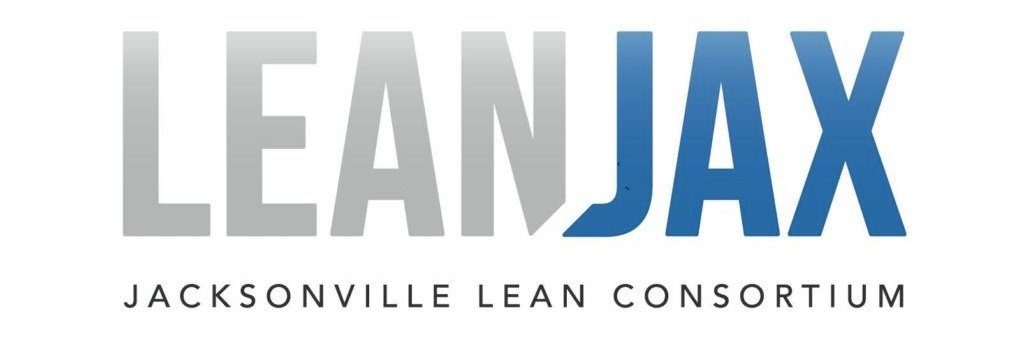A Step-By-Step Guide to Lean Bright Ideas
I. What is Lean Bright Ideas?
Organizations seeking to accelerate their Lean transformations are wise to tap into into minds of all stakeholders. The most successful Lean organizations understand that the people who do the work and have direct experience with the process are best equipped to raise issues and drive sustainable improvement each day.
Lean Bright Ideas provides a structured visual management system for employee suggestions. It offers a simple, effective, low cost way to actively engage employees (at all levels) in continuous improvement activities, while ensuring all improvements are aligned with the organization’s key strategies.
This system shows respect for people—as organizations eschew the traditional top-down management culture for an environment focused on developing the capabilities of all employees—providing the opportunity to experiment, remove frustration, and continuously improve their work and work experience.
II. Why Lean Bright Ideas?
Toyota is famous for creating the production system that inspired Lean Thinking. One of the company’s keys to success is its’ engagement of workers throughout its’ enterprise. Between 1951-1991, Toyota’s employees implemented over 20 million improvement ideas, 90 percent of the overall employee suggestions were approved.
In recent years, employees from Toyota’s Georgetown, Kentucky plant have averaged 80,000 improvement suggestions per year with a 99 percent implementation success. There’s no secret to the automakers success: ITS’ THE PEOPLE.
Lean Bright Ideas’ core objective is to foster an environment where everyone can quickly and effectively use the scientific method and A3 Thinking to systematically surface reoccurring problems and solve each one at its’ root cause. In other words, Bright Ideas helps workers identify abnormal conditions (gaps between their operation’s current state and target condition) and empowers them to creatively discover ways to bridge these gaps.
Many Lean transformations fail to reach their lofty expectations because continuous improvement activities are done TO the people, rather than WITH the people. Lean Bright Ideas aligns with the latter helping organizations unlock the knowledge, creativity, and excitement of workers throughout the enterprise—the ingredients of a world-class culture.
The upcoming sections will provide you with a step-by-step guide and proven template for implementing this system at your company.
III. How to Implement Lean Bright Ideas
Set up visual white board for Lean Bright Ideas system and place in easily visible area. (If a virtual work environment, creating a virtual board that allow employees to submit their ideas.)
2. Select department to pilot the system. (i.e. Operations, production, receiving, shipping, quality control, HR, IT, etc.)
I recommend starting with one department, make your mistakes there and learn from them, then once the initial system achieves stability, roll it out to additional areas.
3. Select 4-5 Key Result Areas (KRA) that represent organization’s mission and purpose and select a different color for each KRA.
4. Sponsor holds awareness meeting with team members to communicate the implementation of the system. (Lean awareness training focused on the 8 wastes is another idea to consider).
The awareness session should explain to the team members:
What is it?
Why are we doing this?
What’s the expectation?
What’s in it for me?
How does it work?
When are we starting?
The Sponsor might considering filling out 1-2 cards with their improvement ideas to accelerate the implementation process.
5. Team members fill out cards (stickies or index cards) that include their improvement idea on them and place it in the Incoming column. Each card should include:
Date submitted.
Team member name & initials.
Waste(s) identified.
Improvement idea/proposed countermeasure. (Use DMAIC process to propose improvement ideas/countermeasures.) Examples may include: standard work, 6s workplace organization, mistake proofing, visual management techniques, communication improvements, kanban, continuous flow, etc.
Benefits/risks.
Sponsor name.
Review date.
Approved?
Sponsor’s initials.
6. The Sponsor must move each Incoming card to the Selection column, review the card, and make decision within 48 hours (whether to proceed or not and why?)
7. The organization should create standard work for this decision-making process so it doesn’t become arbitrary. Effective decision-making criteria involves a cost/benefit/risk analysis.
8. It’s helpful to involve additional leaders with authority/responsibility over the area to collaborate with the Sponsor when reviewing each submission.
9. Sponsor can take three different courses of action:
A. Move card from Selection to Active (Approved) column and assign for implementation by initialing and circling Approved. The Sponsor should add written notes on the back of the card to document the plan and actions required for implementation.
B. Move card from Selection to Parking Lot (Approved). These cards include approved improvement ideas, but due to project prioritization, current resources, and/or WIP limits, their implementation must be postponed to a later date. Sponsor should state the reason for postponement on the back of each card and speak with the team member about the decision.
C. Write reasoning for rejecting idea on the back of card and return the card to the team member. Sponsors should thank the team member for the submission and articulate why it was rejected.
10. Sponsor conducts concise huddles with team members one (1) to three (3) times per week to review and discuss the cards. This can often be incorporated into pre-existing daily huddles.
11. As a card is implemented, team member or Sponsor moves the card to the Completed column and updates the scorecard (Results column) with implemented improvements.
12. Sponsor covers the status of the system once a week in weekly meeting to celebrate completed improvements and discuss active ones in the pipeline.
IV. Columns
1. Key Result Area (KRA)
Each organization should decide on the KRAs that fit best in its’ culture (i.e., Safety, Quality, Productivity, People Development, etc.).
If an organization decides to implement the system in multiple departments, it is helpful to use the same KRAs to promote alignment.
Lean Bright Ideas boards can serve as an extension of an organization’s overall Strategy Deployment system.
Each improvement idea may represent more than one (1) KRA. In this scenario the team member should select the color card that he/she believes the improvement idea will most significantly impact.
2. Incoming
The column where the team member places each filled-out card.
3. Selection
1-3 times per week, Sponsor reviews newly submitted cards and either moves them to the Active (Approved) or Parking Lot (Approved) columns. The Sponsor might want to work with a team leader during this review process.
The Sponsor should standardize the decision-making process so it does not become arbitrary.
If the idea is rejected, Sponsor must explain the reasoning on the back of card and speaks with team member.
Sponsor must review each card, formulate a decision, and inform the team member within 48 hours of the cards’ submission.
Sticking to this time standard is critical, as it promotes accountability and action.
4. Active (Approved)
This is the column that houses the cards that Sponsor initialed/circled approval. These cards represent the improvement projects team members are currently working on (WIP).
5. Completed
Completed projects are moved into this column. During the period when this system is new, you may decide that the team member should review card with Sponsor prior to moving card here, but once the system is more mature, it’s beneficial to allow the team member to move the card without prior authorization. This establishes the trust needed to sustain the system.
6. Parking Lot (Approved)
These cards include approved improvement ideas, but due to project prioritization, current resources, and/or WIP limits, are postponed to a later date.
Sponsor must state the reason for postponement on the back of each card and speak with the team member about the decision.
If the WIP limits are exceeded, an improvement located in the parking lot shouldn’t be moved to active until one of the cards is completed. (See below)
WIP Limits
Based upon organization’s capacity/resources. You may want to cap number of suggestions per week per KRA (WIP Limits) to ensure improvements are all timely implemented. This will also help everyone involve prioritize the most impactful suggestions.
V. Implementation Tips
For Success in Engaging Team Members
I recommend using the straight-forward techniques for positive behavioral change outlined by James Clear in his book Atomic Habits:
Make it obvious: Put Lean Bright Ideas board in visible location; display completed A3s in a centralized location so everyone in the organization can check them out.
Make it attractive: Sponsors and team leaders practice discipline and accountability in reviewing submissions and approving ideas; tie suggestion system involvement to opportunities for cross-training and career advancement.
Make it easy: Focus on waste elimination; develop clear standard work for the system; teach team members to follow the DMAIC process and capture their improvements on A3s.
Make it satisfying: remove long-standing problems; Track results; consistently celebrate success; offer organization wide recognition to team members.
Additional Best Practices
Set tangible goals; select and measure impactful metrics. (Transition from lagging metrics to leading once the system achieves stability)
Track and communicate weekly results.
Capture Lessons Learned.
4. Celebrate success!
5. Sponsors and team members meet often to discuss and continuously improve system.
VI. Summary
I hope this article and its’ standardized implementation steps help you develop a transformative employee suggestion system. Please use this article as a guide and adapt the process to the specific needs and culture of your company. I’d love to hear about your experiencing leveraging Lean Bright Ideas.











